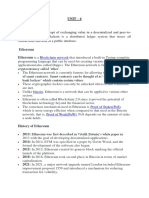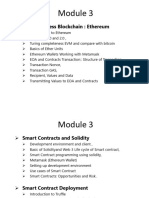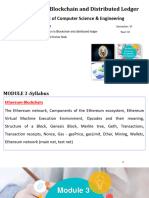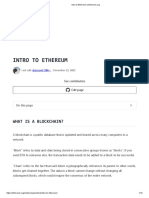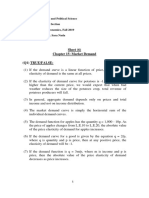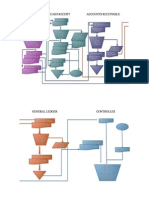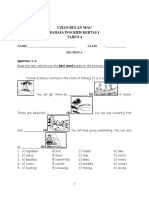0% found this document useful (0 votes)
18 views47 pagesModule 4
Ethereum is a decentralized computing network that allows developers to create applications using smart contracts on its blockchain, with its own cryptocurrency called 'ether'. Initially released in 2015, Ethereum has evolved through various upgrades, including a shift from Proof of Work to Proof of Stake consensus mechanism, significantly reducing energy consumption. Key features include the Ethereum Virtual Machine (EVM), smart contracts, and decentralized applications (DApps), which operate on a peer-to-peer network.
Uploaded by
diyakulal05Copyright
© © All Rights Reserved
We take content rights seriously. If you suspect this is your content, claim it here.
Available Formats
Download as PPTX, PDF, TXT or read online on Scribd
0% found this document useful (0 votes)
18 views47 pagesModule 4
Ethereum is a decentralized computing network that allows developers to create applications using smart contracts on its blockchain, with its own cryptocurrency called 'ether'. Initially released in 2015, Ethereum has evolved through various upgrades, including a shift from Proof of Work to Proof of Stake consensus mechanism, significantly reducing energy consumption. Key features include the Ethereum Virtual Machine (EVM), smart contracts, and decentralized applications (DApps), which operate on a peer-to-peer network.
Uploaded by
diyakulal05Copyright
© © All Rights Reserved
We take content rights seriously. If you suspect this is your content, claim it here.
Available Formats
Download as PPTX, PDF, TXT or read online on Scribd
/ 47





